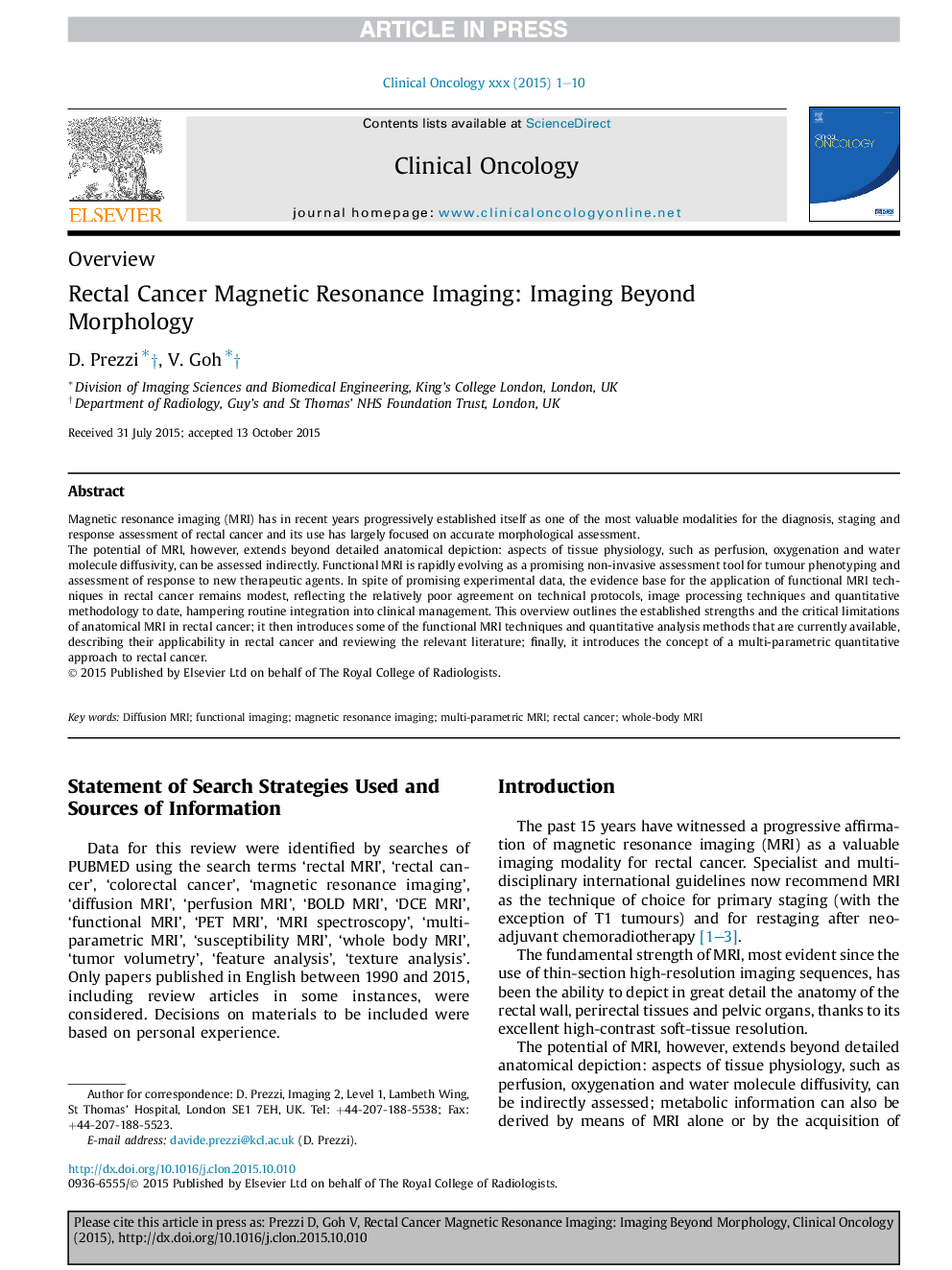| Article ID | Journal | Published Year | Pages | File Type |
|---|---|---|---|---|
| 5698380 | Clinical Oncology | 2016 | 10 Pages |
Abstract
The potential of MRI, however, extends beyond detailed anatomical depiction: aspects of tissue physiology, such as perfusion, oxygenation and water molecule diffusivity, can be assessed indirectly. Functional MRI is rapidly evolving as a promising non-invasive assessment tool for tumour phenotyping and assessment of response to new therapeutic agents. In spite of promising experimental data, the evidence base for the application of functional MRI techniques in rectal cancer remains modest, reflecting the relatively poor agreement on technical protocols, image processing techniques and quantitative methodology to date, hampering routine integration into clinical management. This overview outlines the established strengths and the critical limitations of anatomical MRI in rectal cancer; it then introduces some of the functional MRI techniques and quantitative analysis methods that are currently available, describing their applicability in rectal cancer and reviewing the relevant literature; finally, it introduces the concept of a multi-parametric quantitative approach to rectal cancer.
Keywords
Related Topics
Health Sciences
Medicine and Dentistry
Oncology
Authors
D. Prezzi, V. Goh,
